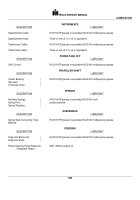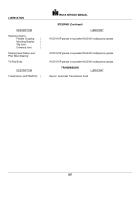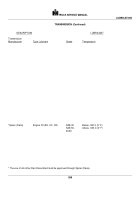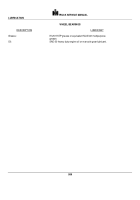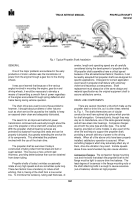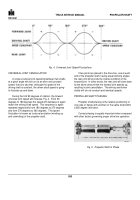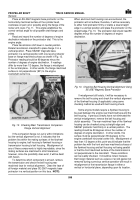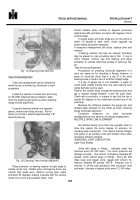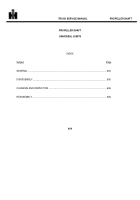TM-5-3805-254-14-P-2 - Page 603 of 894
PROPELLER SHAFT
TRUCK SERVICE MANUAL
General
possible.
See Fig. 8.
Road test the vehicle or spin the
drive line; then, by moving the weight to various locations
on the shaft, find the point of least vibration.
Increase or
decrease the weight at this point to obtain as perfect a
balance as possible.
Mark the location of the weight on
the shaft and remove the hose clamp and weight.
Weigh
the weight and add 3/8 of an ounce for the clamp screw
and nut.
Select a piece of steel of this total weight and
tack weld to the propeller shaft at the locating mark.
Hold the weld material to a minimum.
For vehicles with a single propeller shaft use an
adjustable hose clamp and a small weight
(approximately 1/2 ounce).
Clamp the weight to the front
end of the shaft and cut off the excess material of the
band as close to the clamp as possible.
Road test the
vehicle or spin the drive line; then, by moving the weight
to various locations on the shaft, find the point of least
vibration.
Increase or decrease the weight at this point to
obtain as perfect a balance as possible.
Mark the
location of the weight on the shaft and remove the hose
clamp and weight.
Weigh the weight and add 3/8 of an
ounce for the clamp screw and nut.
Select a piece of
steel of this total weight and tack weld to the
propeller shaft at the locating mark.
Hold the weld
material to a minimum.
CAUTION
: When using hose clamps to attach loose
weights to a propeller shaft (when checking for
vibration), make sure that the weights are clamped
securely to the shaft t avoid the hazard of weights
flying off.
COMPANION FLANGE ALIGNMENT AND RUN-OUT
An important consideration for maintaining
acceptable propeller shaft alignment is to keep all
propeller shaft companion flanges or yokes parallel, Fig.
2.
In other words, all flanges or yokes must be
perpendicular in both vertical and horizontal planes to the
engine crankshaft, Fig. 9.
It should be noted, however,
that the flanges of a "broken back" type drive line are not
parallel in the vertical plane, Fig. 3.
These flange angles will be discussed later. For the
moment we will consider the parallel joint type drive line.
Fig. 9.
Drive Line Horizontal and Vertical Alignment
596
Back to Top

